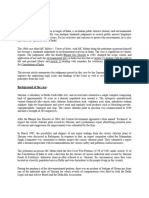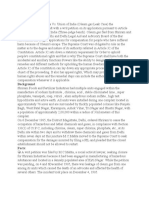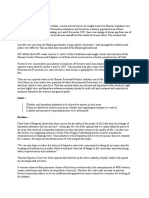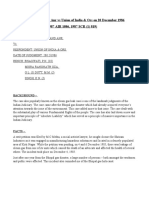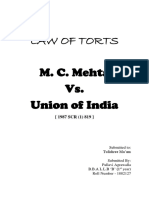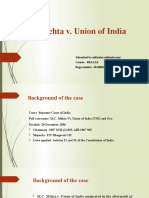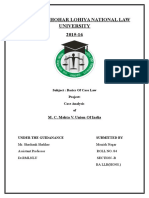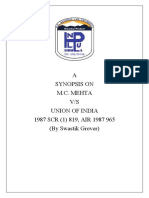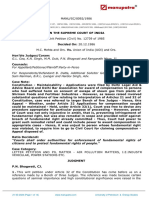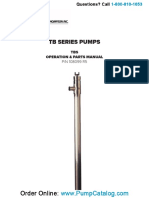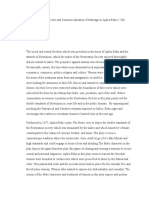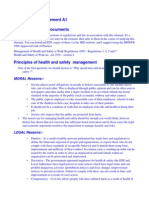0% found this document useful (0 votes)
82 views18 pagesCase Analysis 2
The Supreme Court of India ruled in the landmark case MC Mehta v. Union of India (1986) regarding the caustic chlorine plant of Shriram Foods and Fertilizers, following the Bhopal Gas Disaster. The Court addressed significant legal principles related to environmental law, public interest litigation, and the right to life under Article 21 of the Constitution, ultimately allowing the plant to reopen under strict safety measures despite the risks posed to the densely populated area. The judgment emphasized the need for a national policy on the location of hazardous industries and highlighted the importance of balancing environmental safety with employment concerns.
Uploaded by
Tripti JainCopyright
© © All Rights Reserved
We take content rights seriously. If you suspect this is your content, claim it here.
Available Formats
Download as DOCX, PDF, TXT or read online on Scribd
0% found this document useful (0 votes)
82 views18 pagesCase Analysis 2
The Supreme Court of India ruled in the landmark case MC Mehta v. Union of India (1986) regarding the caustic chlorine plant of Shriram Foods and Fertilizers, following the Bhopal Gas Disaster. The Court addressed significant legal principles related to environmental law, public interest litigation, and the right to life under Article 21 of the Constitution, ultimately allowing the plant to reopen under strict safety measures despite the risks posed to the densely populated area. The judgment emphasized the need for a national policy on the location of hazardous industries and highlighted the importance of balancing environmental safety with employment concerns.
Uploaded by
Tripti JainCopyright
© © All Rights Reserved
We take content rights seriously. If you suspect this is your content, claim it here.
Available Formats
Download as DOCX, PDF, TXT or read online on Scribd
/ 18
